7 Reasons Why SUP Fly Fishing Is Here to Stay

By Jason Paul
As anglers are increasingly searching for creative ways to get on the water, the sport of SUP fishing continues to grow in popularity with each passing year.
But did you know that SUP fishing is a relatively new twist on something that actually goes back thousands of years? While the modern-day SUP fishing movement began approximately twenty years ago, the anglers of Peru were paddling around thin fishing canoes made of reed at least three thousand years ago.
In reality, this form of fishing has been around in some form or another for centuries because of the many advantages it offers over fishing from a boat or land. In this article, we’ll take a look at seven key reasons why SUP fly fishing is here to stay.
#1. Portability and Convenience
When compared with boats, stand up paddle boards are incredibly convenient to get on the water and inflatable fishing SUPs can even be deflated, rolled up, and brought along with you wherever you go. While traditional fishing boats have many obvious limitations in terms of where they can and can’t go, a lightweight paddle board and your fly fishing gear can be easily packed up and brought anywhere, opening up a whole new world of exciting opportunities and spots to fish.
#2. Accessibility
Everyone knows just how important it is to find the fish and there’s no easier way to reach the perfect fishing holes than on a SUP. Paddle boards are far more agile than boats and even kayaks, giving you an unfair advantage by allowing you to easily go where others can’t.
Read More »Glass or Graphite, What’s Right For You?
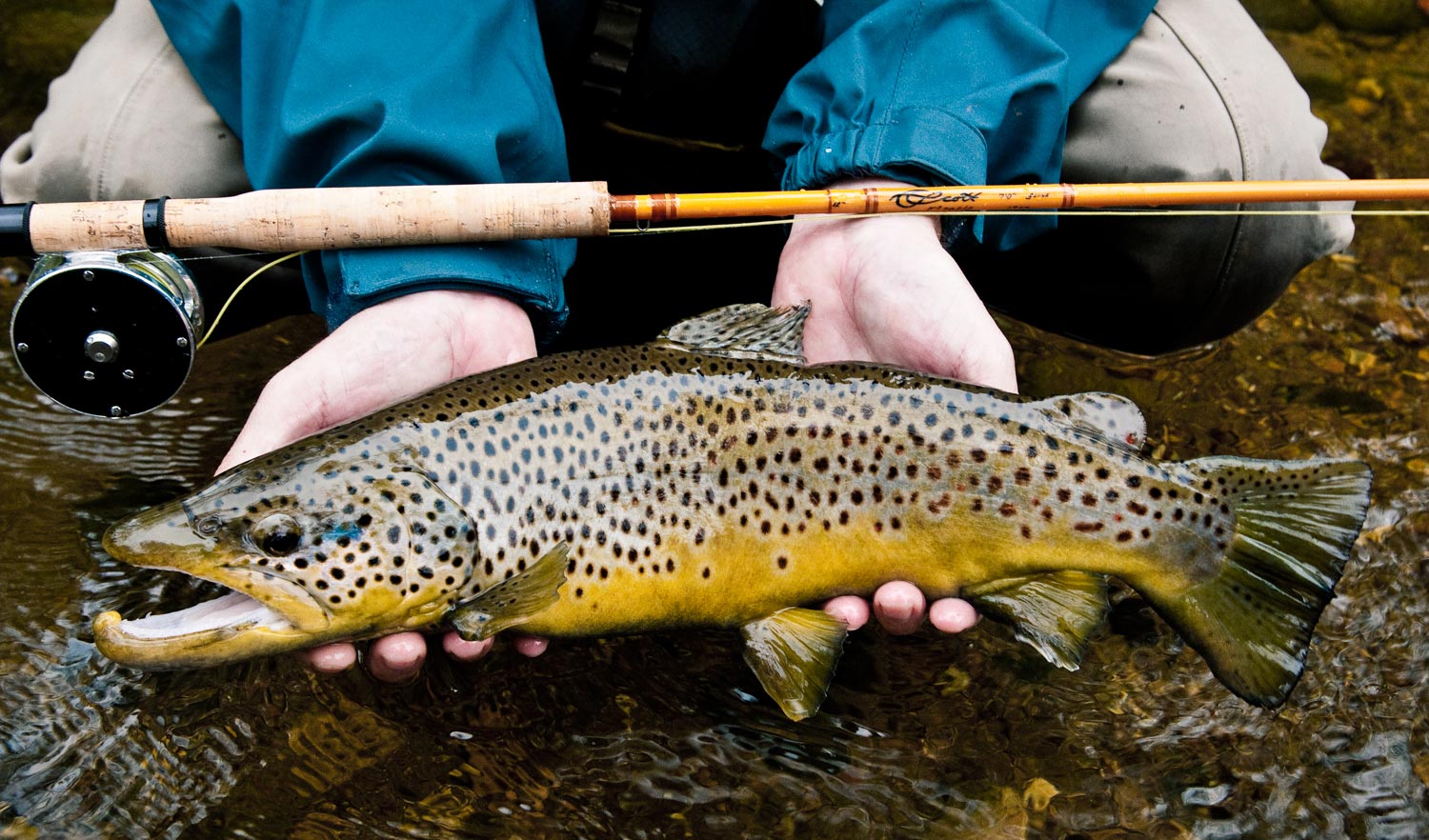
When choosing between graphite and fiberglass fly rods, it’s smart to consider where and how you fish.
I got an email the other day from a reader. Here’s an excerpt:
“I am looking at a 7wt predominantly for trout and smallmouth here in Tennessee. I currently have a mid action 6wt that is really nice, but since I don’t have a boat, it’s hard to make long casts with weighted streamers to trout on the opposite bank. I recently found the blue halo 7wt glass rods, and I guess my question is how do you feel about fiberglass streamer rods? Do they have the muscle to turn over the same weighted streamers a graphite 7wt would have?”
It’s a great question. There’s a lot of enthusiasm right now for heavyweight fiberglass fly rods. I have one myself and I enjoy fishing it very much. Does that mean it’s the best tool for the job? Not necessarily. If, like the fellow who emailed me, I was mainly concerned with casting a heavy fly to the far bank, it’s probably not the rod I’d choose.
I like fiberglass rods a lot. I have glass single-handers in weights from 2-8, and a one spey. There are some things they are very good at, and some things they are not. You can make a long cast with a heavy fly using a glass rod but you’ll have to be a great caster.
When you are deciding between glass and graphite, consider the strengths of each.
Strengths of fiberglass fly rods
Feel: Fiberglass rods have great feel, which means that it’s easier to feel the rod load. The feedback which the caster receives from the rod makes casting very pleasant for anglers who enjoy feel.
Tempo: Glass rods are slow. That’s both an asset and a liability but the slower casting tempo which comes with a slower rod is easier in many ways. If you were trying to play a complicated piece of music, wouldn’t it be easier to play it slowly?
Presentation: Because they do not generate the line speed graphite rods do, glass rods lend themselves to delicate presentations. Remember, however, that presentation is about casting skill and material alone is not the answer.
Strength: Not strength as in casting power, but
Read More »Catching Big Trout Sometimes Takes Multiple Attempts
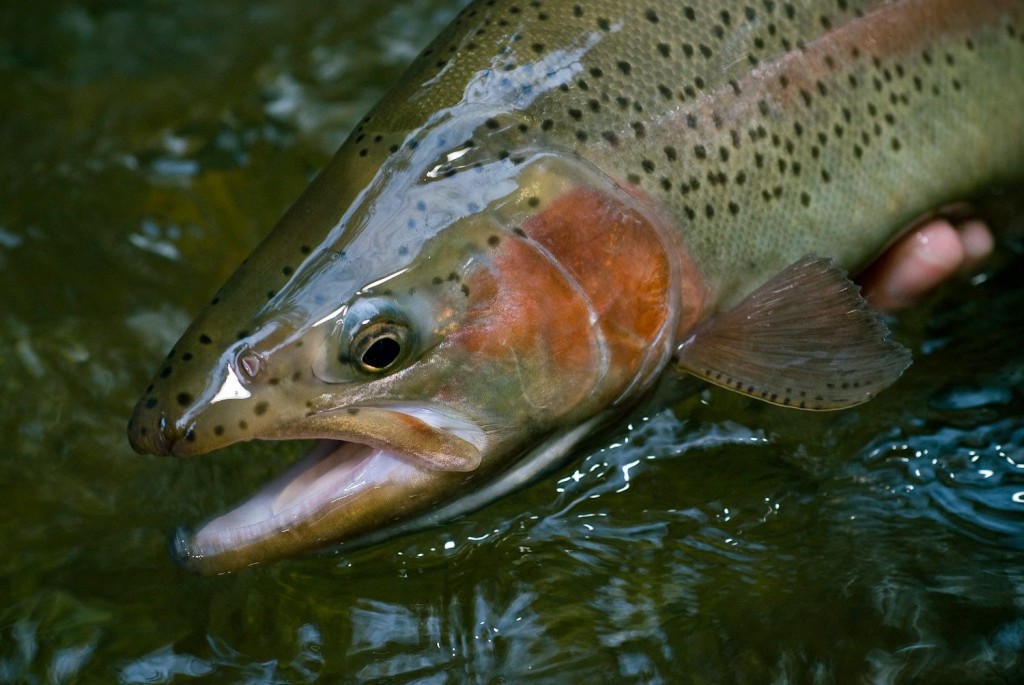
Several times this past year guiding, my clients would miss a big fish opportunity during our fishing trip.
Sometimes it would be because of a poor hook set, other times, it was completely out of their control by last second refusals or turn offs from the big fish. We’d always make several more casts and try using different flies, but most of the time the big fish would have already caught on and would ignore our offerings despite perfect presentations. Without giving up on the cause I would tell my clients, “no worries, let’s come back later in the day and give that big fish another go”. Not always but quite often, we’d come back and catch that big fish the second time around. When we were fortunate enough for it happened it was the most thrilling guiding for me, and my clients couldn’t have been more pleased and proud of themselves.
If you find yourself wading a river or stream and spot a big fish but don’t catch it, don’t accept defeat, let the fish cool off and come back an hour or two later for a second shot. If you do everything right, most of the time you stand a very good chance at catching the trophy. This simple fly fishing tip, is overlooked by a lot of anglers and it’s paid off for me time and time again throughout my years guiding. Don’t be
Read More »Cobia on the Fly
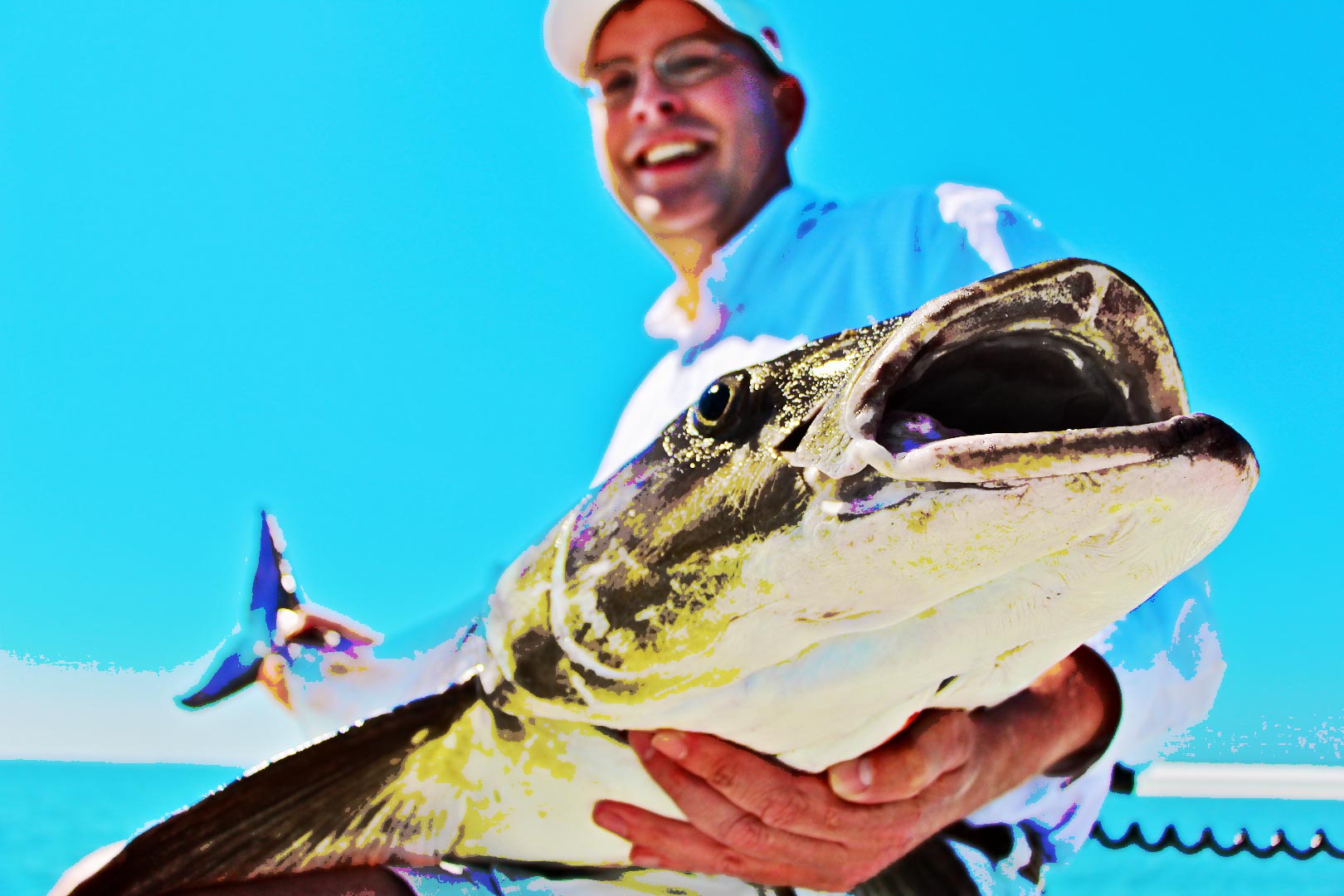
By Owen Plair
ONE THING I ABSOLUTELY DESPISE ABOUT THE SPRING IS POLLEN.
It seems like every time I wash the skiff, in just a matter of minutes it’s tainted by the yellow crap we call a sign of spring. There is one thing, and one thing only, that I do like about all the damn pollen. It means it’s only a matter of weeks before I start packing the 11 and 12 weights on the skiff for the big brown Cobia as they start to show up here in the Broad River.
I was born and raised on this river and have been fishing it since I was 3 years old. What makes this river special to me is, in addition to being an excellent fishery for Redfish, it hosts other species through out the year including Tarpon, Triple Tail, Sea Trout, Flounder, Jacks, Spanish, Blues, Lady’s, and very well known Cobia.
Around the last week of April, or when the water temperature hits around 68 degrees, the Cobia start to move into the Broad River here in Beaufort, SC. What’s cool about these Cobia is, they come inshore 8-10 miles to spawn. Cobia are an offshore species and can be found on near-shore wrecks or off the beaches from Key West all the way up to the Chesapeake Bay.
IMG_5446_2Most places, you catch Cobia swimming under rays, jigging them up from the bottom, or cruising the surface looking for bait. Here, they offer some really great sight fishing on the fly and put up quite a fight, being between 10-80 lbs on average. They’re also a very popular species for the dinner table.
What makes our Broad River Cobia unique is that they are their own strain of Cobia. The fish that come inshore every year to spawn in the Broad have their own unique genetics, compared to all the other Cobia. This was discovered a few years ago by scientists from the South Carolina Department of Natural Resources. So, the Cobia we target on fly in the River are from a long line of fish that have been coming into this river to spawn for who knows how long.
I started Fly Fishing for these fish about 7 years ago and it’s still one of my favorite seasons to guide, because of how special it is targeting this offshore species so far inshore. When the water temperature hits around 68 degrees the Broad River turns into an vibrant estuary filled with various different bait fish, sea turtles, jelly balls, spanish, blues, in blueish/green water similar to the Gulf of Mexico.
HERE’S HOW YOU TARGET COBIA SIGHT FISHING ON FLY?
Read More »Bahamas Poon
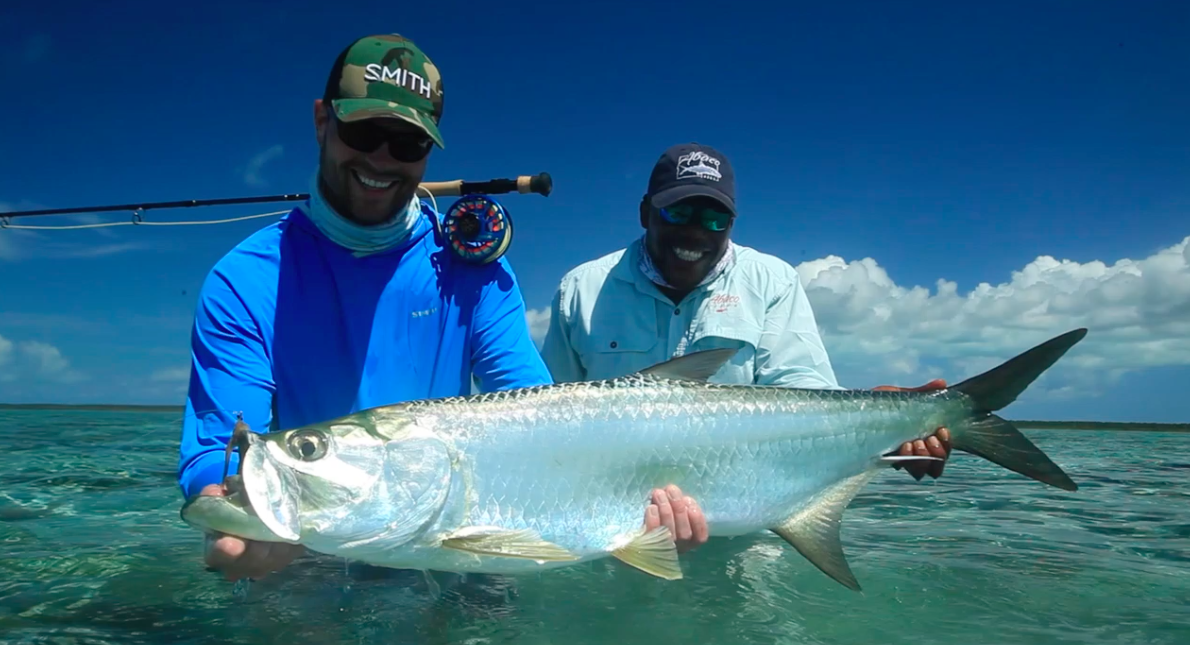
There’s no such thing as a bad day of flats fishing in the Bahamas.
There are however, exceptional days. The G&G hosted trip to Abaco Lodge this March had it’s fair share of exceptional days. We had a great group of anglers, beautiful weather and great fishing. You couldn’t ask for more, but we got more anyway.
Anglers Shane Maybush and Peter Olsen both got nice tarpon. Shane was doubley blessed to have lodge manager Christiaan Pretorius, and his pile of cameras and drones, on the boat when it happened. Chris put together this stunning short video of the event, which features some pro-level fish fighting and line dancing by Shane. Shane guides for Mossey Creek Outfitters in VA. If you’re in the area, look him up.
CHECK OUT THIS AWESOME VIDEO BY CHRISTIAAN PRETORIUS.
Read More »Catching Air

By: Alice Tesar
My outdoor gear is always put to the test when I take it for a spin with my toddler. Recently my partner and I were fishing with him at a local spot that has a wide rocky bend. We let him play around, eat a few rocks, and investigate sunbathing snakes while we got some casts in. I paused to tie on a new fly and he hobbled over to me to inspect my choice. He gestured to hold my rod and while I repeatedly offered him to hold my net instead, he insisted on the rod and began to throw a tantrum. In a moment of trust or parental weakness — it is all a blur — I let him hold the rod. In a split second, he had run two-rod lengths down the shoreline and was jamming my 4 wt. Winston Pure under the water, bent in a right angle, back-and-forth in the freestone river bed. As fast as he got away, I was bear hugging him, the rod, the net, and, well…the fly was hugging my thumb with its barb. To my surprise, the rod and all its guides were still intact. Everyone talks about the Winston Feel but I think the Winston “Durability” also needs some credit. The three of us regrouped, removed the barb from my thumb, the tantrum prone toddler went back in the pack and we cast on.
I was relieved to see that the rod was casting fine given its recent assault. The Pure is a dry fly rod made for precise presentations and light flies and it is spring in the Rockies which means deep nymph rigs. Nevertheless, it was a new rod and I was looking to put it to the test. With some effort it cast my weighted nymph rig sufficiently but the true magic of a rod like the Pure is its presentation of a dry fly. Feeling the flex in my palm, the nearly weightless rod shoots a size 18 CDC Midge to the top of the riffle. A long, slow drift made effortless by the rod’s flick-of-the-wrist mending capacity. We did cast dries to a few rising fish as the morning went on, but as happens more frequently now due to the wandering toddler, I’m not paying as close attention to the river’s hints nor the trout’s take. We left skunked but with our rods intact.
When we became a family of three, we were gifted a book that we condemned to the shelf immediately.
Read More »Developing Your Target Picture Means Catching More Fish
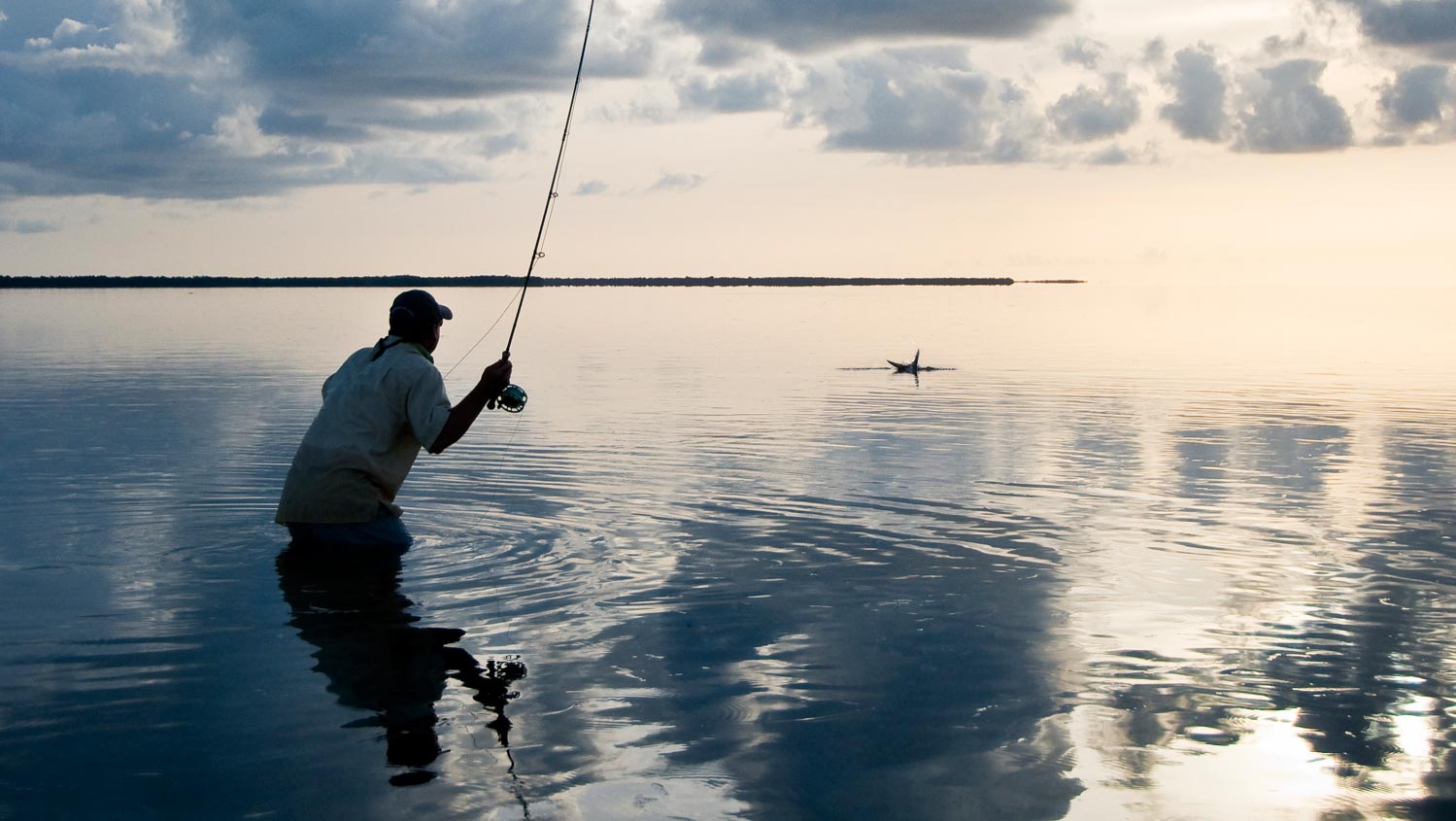
What does skeet shooting have to do with fly fishing?
MORE THAN A DAY OF CAST AND BLAST, FOR SURE.
Target picture is a term skeet shooters use to describe the visual cue a shooter uses to tell him when to fire. Since the shooter is leading the clay, rather than firing directly at it, it’s important to visualize the lead for a given shot and fire when you see that “picture.” It’s a skill that separates a real shooter from a novice.
The same principal works in fly fishing. Being able to visualize the presentation before making it pays off big. It’s a simple idea when you are casting a fly to a rising trout. The actual target is well up stream of the rise form, since the fish will actually be holding upstream of where you see him rise. The current carries him downstream as he comes for the fly so, depending on the current speed and how deep the fish is holding, it can be quite a difference. Of course, your goal is to land the fly just outside of the fish’s field of sight, so you may need to lead him upstream a good ways.
What is simple on a trout stream usually becomes devilishly complex in the salt and leading a fish is no exception.
When casting to saltwater species there are a lot of variables to take into account. The fish’s speed and behavior, of course, but also the movement of both tide and boat. The angle and intensity of the light and wind come into play too. All that is to say that you never cast directly to the fish. Like a skeet shooter, you need a picture in your head of the right lead for a given situation.
DSCF3588-2bI’m not going to dig into the minutia of figuring every variable. The truth is it’s mostly gut feeling when the time comes to make the shot. Doing it right consistently only comes with
Read More »There’s No Such Thing As A Bad Perm
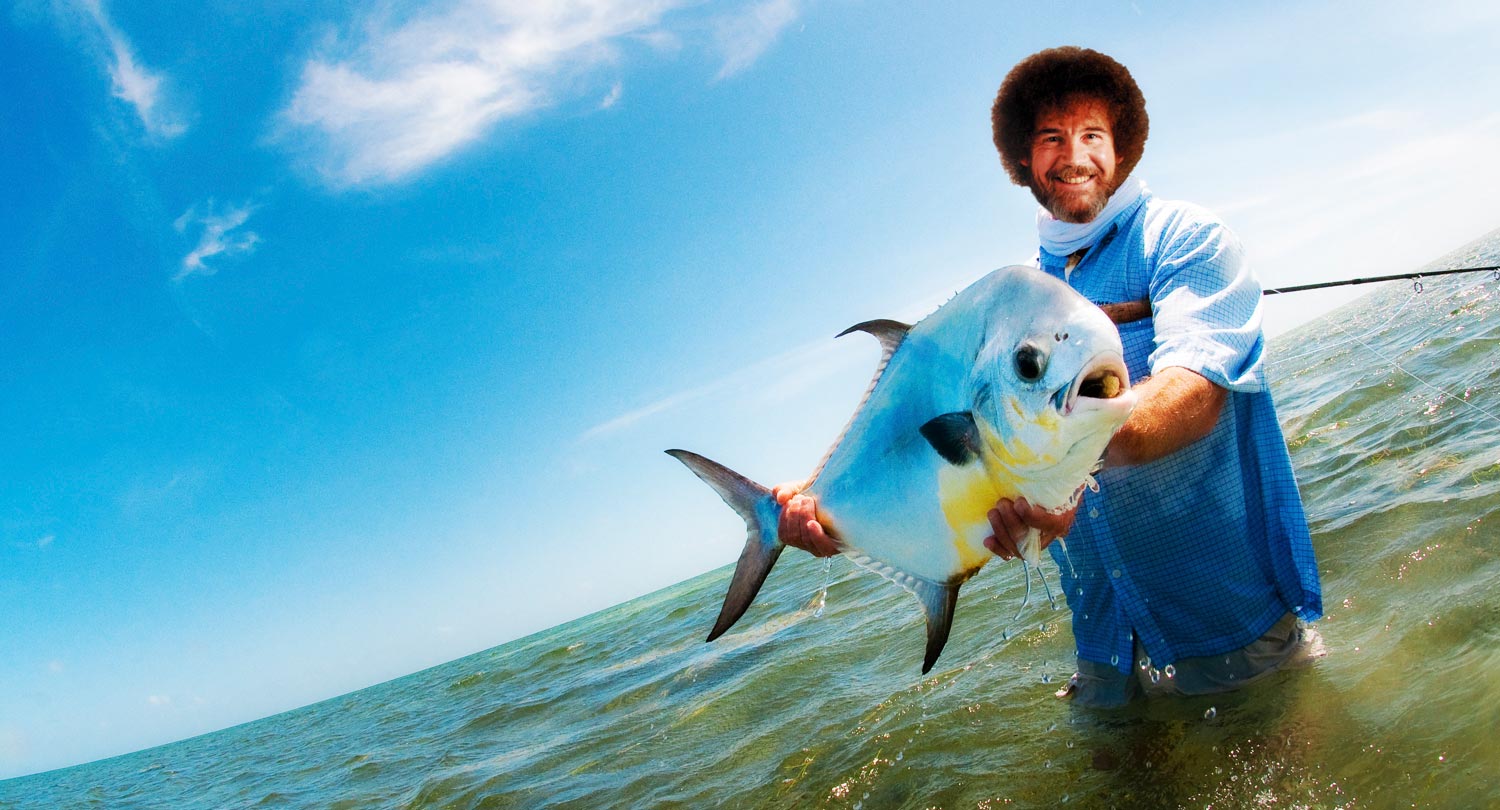
YOU KNOW WHAT THEY SAY. THERE ARE NO SMALL PERMS.
Just perms, and big perms. Happy perms and happy clouds. If you can’t catch perms, you can always drink.
Here’s Bob Ross to teach you how!
http://vimeo.com/32582348
The Bob Ross Drinking Game
Read More »What Every Fly Angler Can Learn From Tenkara

I DIG MY TENKARA ROD AND I’M NOT ASHAMED OF IT.
It seems like there are only two camps when it comes to fishing tenkara. Those who love it and those who hate it. I think the general sentiment of the haters was summed up pretty well by good friend Dave Grossman of SCOF.
“You know the hardest part about tenkara?…Telling your dad that you’re gay.” – Dave Grossman
Well, my father passed away years ago so I guess I’ll tell you. I think I’m gay for tenkara.
Don’t get me wrong, I’m not putting all of my two handers on eBay or chucking out the bonefish rods. I will continue to carry way too many flies and a bag of split shot but I’m taking this willowy little rod seriously and I think you should too.
I’m new to tenkara. I’m not going to pretend to be an expert. We have an expert (Daniel Galhardo of Tenkara USA) writing tenkara content and I encourage you to submit questions for Daniel to answer. What I am prepared to do is tell you why I’m excited about tenkara and what I think it offers to every fly angler.
You’ve probably heard that tenkara is fun. That’s very true. It’s also simple, affordable, convenient and aesthetically pleasing. Those are all good reasons for the sudden popularity of tenkara but there is a whole lot more going on in this ancient Japanese art of angling. Tenkara is making a whole lot of people better anglers.
“It’s between the fish and the fly, man. Take yourself out of the equation.” – Tori Bevins
That quote from bonefish guide Tori Bevins is to this day my favorite bit of fly fishing wisdom. Tori wasn’t talking about tenkara, but he could have been. The lesson is the same. Fly fishing is magic. Not in the Merlin sense but in the David Copperfield sense. It is the art of illusion. The art of making someone, in this case a fish, believe with all their heart in something utterly implausible.
Read More »Sitting On Top Of The World
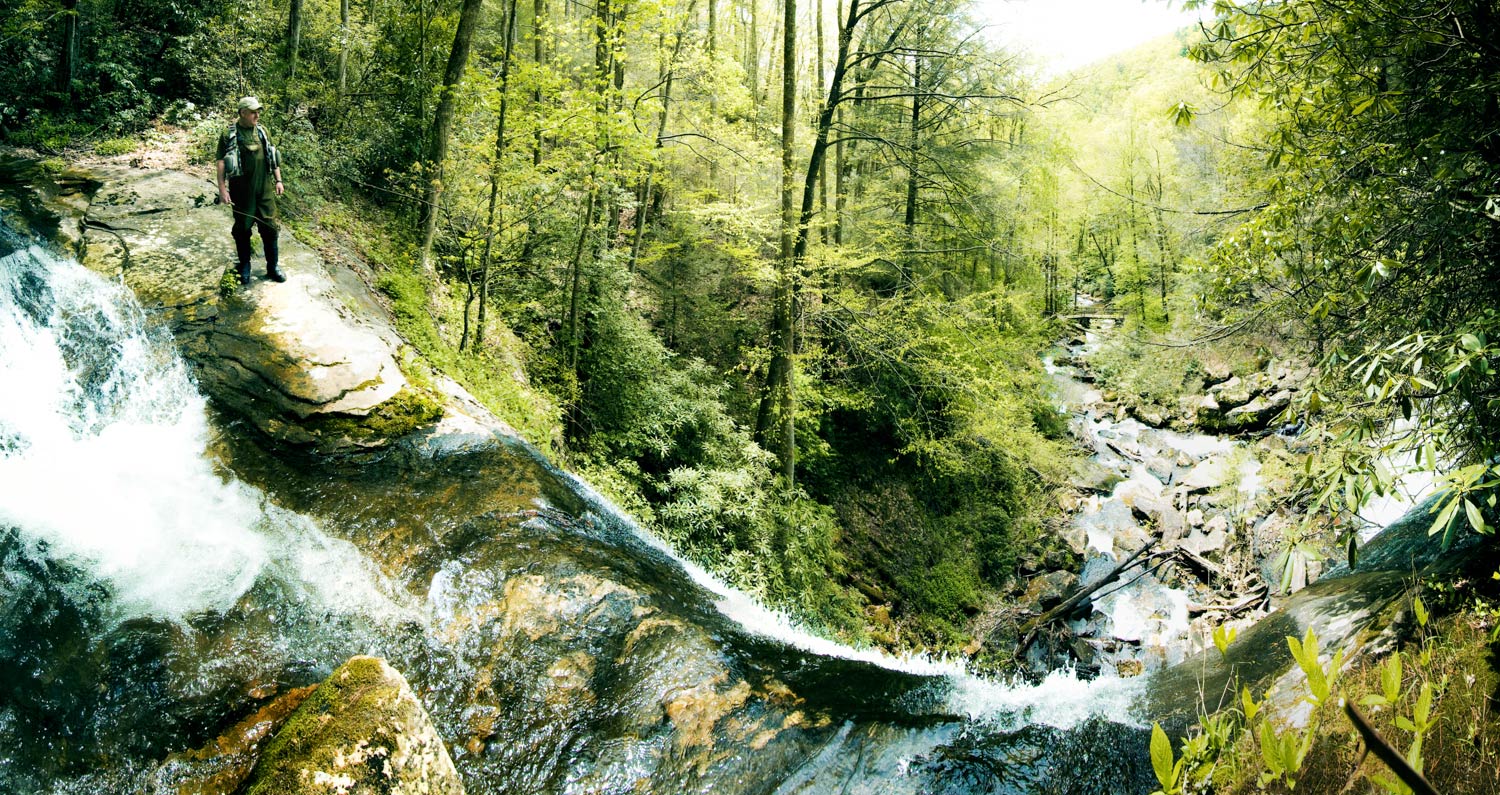
DAN FLYNN STALKS BROOK TROUT IN AN UNDISCLOSED LOCATION.
Summer is here and for those of us in the southeast it’s time to beat it to the headwaters for a little Brookie fishing. If that’s your game, water falls like this one over a hundreds feet high are part of the program. No one is going to tell you where to find wild native brook trout. You’ll need a good topo map and some thick boot soles.
Just watch that last step. It’s a doozie.
Read More »